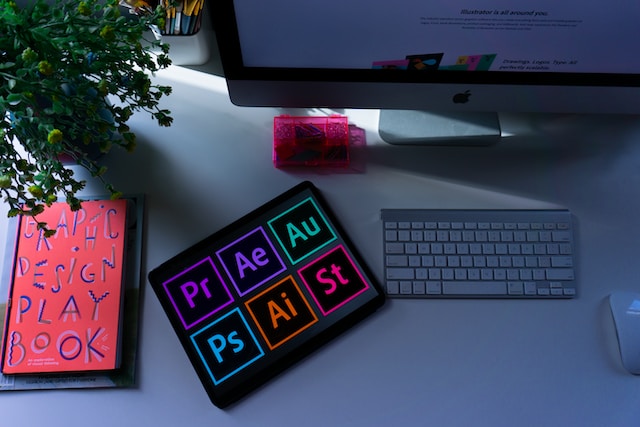
Minimalism, a trend that champions simplicity, is making waves in the world of graphic design. This concept is defined by the use of clean lines, abundant whitespace, and a restricted colour palette to create compelling visuals. The core idea is to let the creature breathe, uncluttered and undistracted, directing the viewer’s attention to the key message. The minimalist approach eschews ornamentation, proving that designs can communicate powerfully without being overly complex.
Minimalism also reflects the principle of user-friendly visuals, ensuring that users are not overwhelmed by unnecessary elements. This makes the design more accessible, leading to a better user experience. With the fast-paced digital era demanding clarity and simplicity, minimalism is a response to this call, providing straightforward, clean, and memorable visuals.
The Magic of Custom Illustrations
Custom illustrations provide a unique identity to brands, adding a touch of authenticity and creativity to their digital presence. Unlike generic stock images, custom illustrations are tailored to reflect the brand’s personality, creating a direct emotional connection with the audience. These illustrations can portray complex ideas and concepts in a simplified, engaging manner, making them an effective communication tool.
The process of creating tailored images involves understanding the brand’s core values, target audience, and overall brand aesthetics. This makes each illustration a well-thought-out representation of the brand, resonating with the audience on a deeper level. Additionally, custom illustrations can be adapted to different formats and mediums, making them a versatile asset in the industry.
A Necessity in the Digital Age
With an ever-increasing variety of devices and screen sizes, responsive design has become a critical component of graphic design. This approach ensures that design elements are visually appealing and functional across different devices, providing an optimal user experience.
The responsive strategy takes into account variables like screen size, pixel density, and touch controls, adjusting the layout, images, and typography accordingly. This approach enhances the user experience, as it allows the format to adapt seamlessly to the user’s device. As the digital sphere continues to evolve, the importance of responsive styling cannot be overstated.
An Interactive Revolution
Augmented Reality is transforming graphic design by introducing an interactive and immersive dimension to structures. AR superimposes digital elements onto the real-world environment, allowing consumers to engage with designs in a way that was previously impossible.
AR provides an opportunity to present forms in a more dynamic and engaging format, amplifying the impact of visual communication. It also offers potential for creativity and innovation, as designers can create augmented reality experiences that are not confined by the traditional boundaries of visual art. From interactive advertising campaigns to virtual product demonstrations, AR is broadening the horizons of what’s possible in visual art.
The Allure of 3D
The three-dimensional method adds a sense of depth and realism to digital graphics, creating a visually captivating experience. The tactile quality of 3D designs invites viewers to explore the visual elements in more detail, enhancing engagement.
3D techniques include modelling, rendering, and animation, each contributing to the overall visual effect. These structures can create a sense of immersion, making the viewer feel part of the visual narrative. Whether it’s a photorealistic product image or an abstract 3D composition, this style is a powerful tool for capturing attention and communicating complex ideas.
Colours play a pivotal role in conveying emotions and influencing perceptions. Lately, the trend is veering towards muted palettes. These subdued hues, often achieved by adding black, white, or a complementary colour, impart a calming, natural, and organic vibe to the design.
Designers use muted palettes to create visuals that are easy on the eyes, encouraging longer engagement. This trend complements minimalistic design sensibilities, aligning with the shift towards subtler, less flashy aesthetics. Brands aiming to exude sophistication, luxury, or vintage charm often favour muted choices.
Expressing Through Letterforms
Typography in graphic design has evolved from a tool for readability into an expressive art form. Developers are pushing the boundaries of typography, experimenting with custom fonts, animated texts, and layered typography to add character and depth to the visual.
Custom fonts, created specifically for a brand, lend uniqueness and individuality. Animated texts or kinetic typography breathe life into static designs, adding a layer of interactivity. Layered typography, wherein text elements overlap each other or interact with visual elements, adds depth and visual interest.